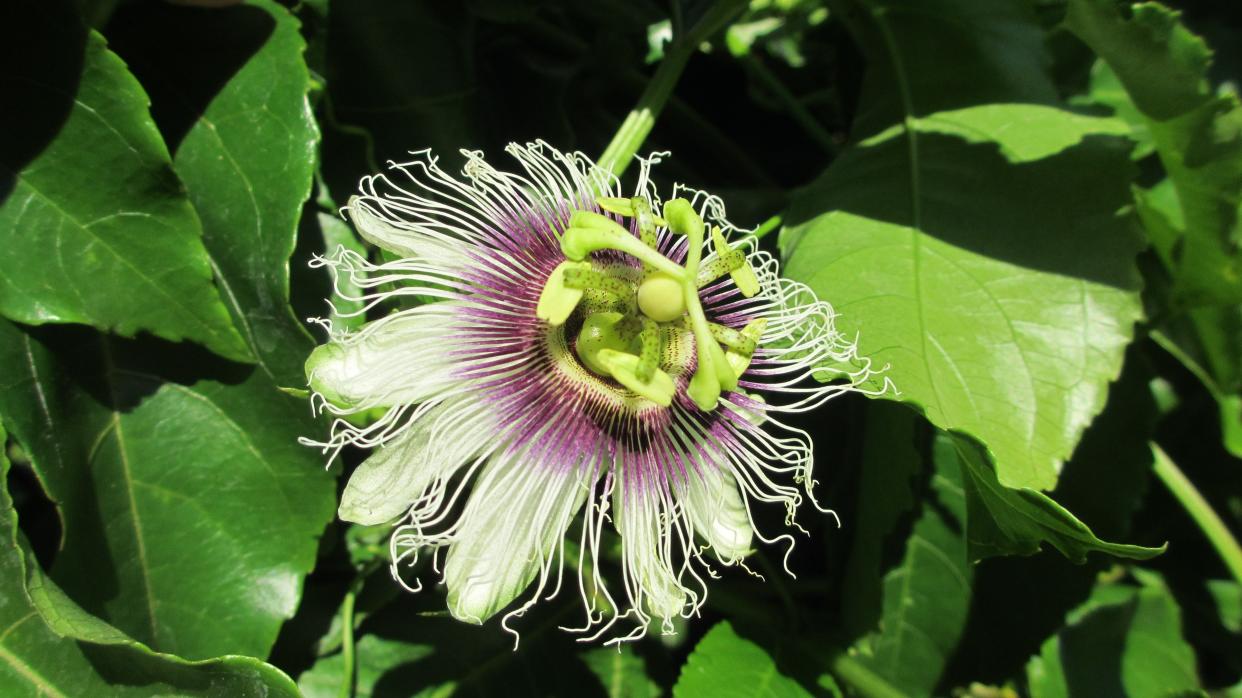Mark Bailey: A garden grows up

When we think of traditional food gardens, we may imagine narrow rows of evenly spaced plants grown within a square or rectangular space. Not everyone has the space for a large garden or can tend to hundreds or thousands of plants. There is another way to garden that has its origins as far back as the ancient hanging gardens of Babylon. Vertical gardening has the advantage of maximizing available vertical space while minimizing the use of ground space.
Vertical gardening provides a lot of benefits to the gardener. First, there is a lot less weeding that is necessary because the ground space needed to grow is far less than traditional gardening. The shade from the vertical-growing plants can further reduce weed pressure. Vertical gardening also requires a lot less stress on the back because little or no bending over is necessary. Another benefit is that, as the plants grow up off the ground, they have better airflow around the leaves that will help keep them dry and reduce foliar diseases. Also, certain edible plants can only be grown using vertical gardening techniques. So, if a gardener wants to grow a diversity of crops, they need to grow up!
Growing using vertical space has a lot of benefits, but it can come with some initial costs. If trellises are used, there will be the costs of materials and time spent installing a sturdy trellis. A trellis can be built in myriad ways to fit the gardener’s preference, but the overall objective is to allow the plants to grow off the ground and to be accessible to the gardener. The kind of trellis a gardener chooses will be determined by the plants they intend to grow. For example, muscadine grapes can be grown on a single trellis wire at about chest or head height, while crops like pole beans and snow peas are more suitable to be grown on trellises with a lot of surface area. For improved durability, it is best to use treated wood or metal posts that are sunk deep enough to handle the weight of the plants. The trellis wires, whether singular or mesh, will need to be rust-resistant and have the appropriate load-bearing capability.
If trees are near the garden location, those can be used as natural trellises. We live in the northern hemisphere, so the sun will always track across the southern half of the sky. Generally, it’s best to plant on the south side of trees so they can access more sunlight throughout the year. It is not always easy for a plant to reach the lower branches of a tree, so biodegradable twine could be used to help a plant reach the lower branches. The problem with using trees as a trellis is that, once the plant has climbed the tree, the fruit or vegetation may not be easily accessed. Either use a small tree as a trellis-tree or choose a plant that will drop durable fruit from the tree canopy. Passion fruit is one of the best choices for using trees as a trellis as their delicious fruit will drop once ripe, and the fruit are very durable.
An intangible aspect of vertical gardening is the potential for growing plants in a way, typically around a home, that is aesthetically pleasing. Edible landscaping, also called “foodscaping,” is something everyone should consider before they buy a lot of expensive plants. They look good. They taste good. Why not give it a try?
Florida has several native plants that are excellent options for vertical gardening. The most common and perhaps best option is the muscadine grape. These vines will live for many decades and can consistently provide excellent-quality fruit year after year. It is important to choose the right varieties and plant them correctly. Passion fruit and maypops are another good option, but they will need a lot of space to grow freely and may not be as reliable as the muscadine grape. More information about both the muscadine grape and passion fruit, along with a lot of excellent garden information, can be found on the University of Florida’s “Ask IFAS” website.
Other options for vertical gardening include robust crops like sweet potatoes and Malabar spinach. These are grown best on a mesh trellis rather than a single-strand wire. Also, these tend to be cold-sensitive, so expect to replant these annually. Depending upon the season, pole beans, snow peas, butterfly peas and other vining legumes are good choices. If the trellis is strong enough, some of the smaller varieties of pumpkins, squash and relatives like chayotes are worth considering.
Vertical gardening does not need to be limited to only plants that need trellising, but can include any plants that can be suspended off the ground. How a gardener chooses to grow plants is essentially limited only by their imagination.
— Mark Bailey is the Sustainable Agriculture and Food Systems Extension Agent for UF/IFAS Extension Marion County. For more information, contact the Marion County office at 671-8400. The Extension Service is located at 2232 NE Jacksonville Road, Ocala, FL 34470.
This article originally appeared on The Gainesville Sun: Mark Bailey: A garden grows up

